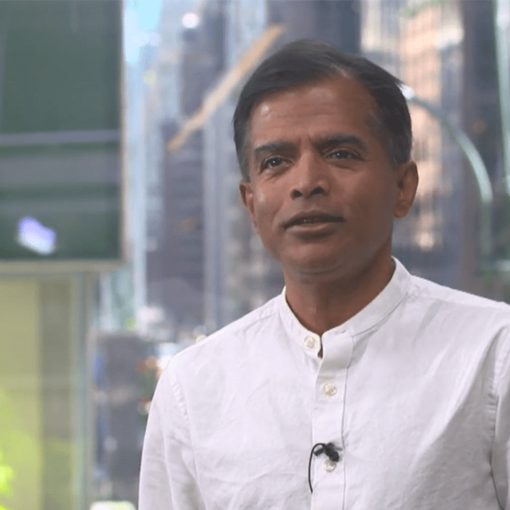“Shortly after October 6, 1979, [US Federal Reserve chair Paul Volcker] met with some chief executives of medium-sized firms. . . . One CEO announced that he had recently signed a three-year labor contract with annual wage increases of 13 percent — and was happy with the result. Only bitter experience would purge inflationary expectations and behavior. ‘Credibility’ had to be won through suffering. That was essentially the Volcker program.” — Robert J. Samuelson, The Great Inflation and Its Aftermath
Will the US Federal Reserve abandon its aggressive contractionary monetary policy once markets begin to capitulate? Many investors hope so. But given the fundamental conditions at play, we would be wise to dispense with such fantasies. The Fed is unlikely to shelve its policy prematurely. That means we should prepare for economic pain more severe than any we have experienced over the past decade.
To understand why the Fed is unlikely to back down, we first need to understand the gravity of the threat.
A Depression Turned Upside-Down
The United States has experienced periods of high inflation lasting longer than a year just six times since 1800. In all but one case, the primary driver was a full military mobilization or the immediate aftermath of such a mobilization. This, of course, was intentional: Wars are easier to fund by printing money and debasing the currency than by raising taxes.
So, what was the one glaring exception to this pattern? The Great Inflation of 1968 to 1982. Flawed monetary policy was the clear culprit here. A misguided Fed succumbed to pressure from politicians of both parties who favored unemployment reduction over price stability.
US Inflation Rate, 1800 to 2020

The Fed’s errant philosophy during this era traces back to the Phillips Curve concept. Economists of the day believed there was a stable trade-off between inflation and unemployment and that lower unemployment could be achieved in exchange for slightly higher inflation. But what Phillips Curve adherents didn’t understand was that while a trade-off did exist, it was only temporary. When unemployment fell below its natural rate, it established a new baseline of expected inflation, and unemployment rates eventually returned to previous levels. The Fed would loosen monetary policy again when unemployment increased, and inflation would spike each time. In pursuit of unsustainably low unemployment, the Fed created a vicious cycle: The country suffered both high unemployment and high inflation, or “stagflation.”
This upside-down depression was as painful as a deflationary depression, but it came with a persistent increase in prices rather than a decline. This was the fundamental dynamic underlying the Great Inflation.
Few who lived through the Great Inflation have fond memories of its economic effects. From 1968 to 1982, the United States experienced four recessions. High inflation dragged down real wages: Workers had bigger paychecks but less purchasing power. Home loans and commercial loans grew increasingly unaffordable as lenders raised rates to compensate for higher inflation expectations.
Meanwhile, stock returns were abysmal. Investors demanded greater returns relative to rising interest rates, and price-to-earnings ratios plummeted. Price instability stunted business investment and operational efficiency, leading to sharp declines in productivity. The hopelessness was reminiscent of the Great Depression. The misery index, which adds the inflation rate and the unemployment rate, bears this out. During the Great Inflation, the metric wasn’t far removed from where it had been during the Great Depression, averaging 13.6% from 1968 to 1982 versus 16.3% during the 1930s.
US Misery Index, 1929 to 2021

The official misery index begins in 1948. The unemployment and inflation data used to calculate the metric pre-1948 use a different methodology. Nevertheless, the general trend is likely directionally correct.
Messaging from politicians made the situation worse. They refused to question their economic assumptions and instead blamed inflation on exogenous events like oil embargoes and the Vietnam War. Yet when these shocks subsided, inflation remained. Retrospective analysis of this event revealed that these were not significant causal factors; they only increased inflation on the margins. The primary cause was persistent, overly accommodative monetary policy.
It was only when Volcker, backed by President Ronald Reagan, began his relentless campaign to shrink the money supply that the Fed re-established its credibility and finally ended the Great Inflation. Of course, Volcker’s campaign was not without cost. The nation suffered a dreadful recession from 1981 to 1982 as the federal funds rate peaked at 20% in June 1981 and unemployment at 10.8% in 1982. The country paid a steep price for 14 years of monetary profligacy. It is not something US central bankers will easily forget or willingly repeat.
Preventing an Upside-Down Depression
The Fed’s current leadership deserves some empathy for the challenges it has confronted since the onset of the COVID-19 pandemic. First, in March 2020, with the help of substantial fiscal stimulus, it staved off a second Great Depression, and now, just two years later, it must counter a potential second Great Inflation. And preventing the latter in 2022 is just as important as preventing the former was in 2020, even if the countermeasures are precisely the opposite. Giving people more money forestalled a return to the 1930s; avoiding a return to the 1970s will require taking money away.
The Fed is already a step behind. It admittedly misjudged the persistence of post-COVID-19 inflation late last year. So, more draconian policies may be required to make up for earlier missteps. And time is running out. The longer inflation persists, the more expectations will shift upward and the higher the cost of reversing the inflationary spiral.
Future Outlook
Make no mistake; the Fed knows why the Great Inflation occurred and how painful a potential rerun of it would be. It will do what needs to be done to prevent such a catastrophe.
There is no such thing as absolute certainty in investing. Human beings are fallible, and economic factors are unpredictable. But it would be ill-advised to bet against the Fed’s sincerity in this case. Rather, we should prepare for monetary tightening that will persist until prices stabilize. Such a scenario is hard to envision without a painful recession and further market declines.
Volcker restored the Fed’s credibility in the early 1980s through suffering. The Fed of 2022 knows that it must pursue a similar course today. While the suffering is inevitable, when and how severe it will be is impossible to know with precision. Indeed, those who would speculate should remember Volcker’s admonition:
If you liked this post, don’t forget to subscribe to the Enterprising Investor.
All posts are the opinion of the author. As such, they should not be construed as investment advice, nor do the opinions expressed necessarily reflect the views of CFA Institute or the author’s employer.
Image credit: ©Getty Images/P_Wei
Professional Learning for CFA Institute Members
CFA Institute members are empowered to self-determine and self-report professional learning (PL) credits earned, including content on Enterprising Investor. Members can record credits easily using their online PL tracker.










 Bitcoin
Bitcoin  Tether
Tether  USDC
USDC  XRP
XRP  Lido Staked Ether
Lido Staked Ether  Dogecoin
Dogecoin  LEO Token
LEO Token